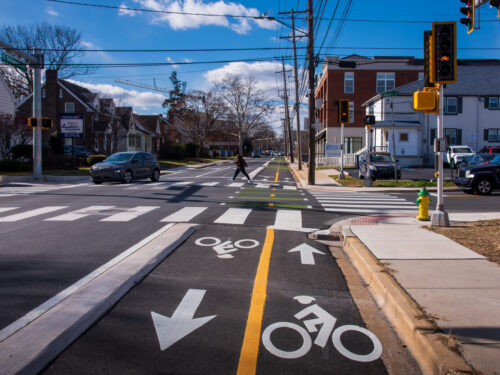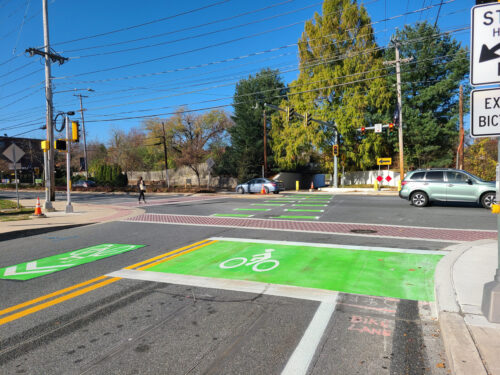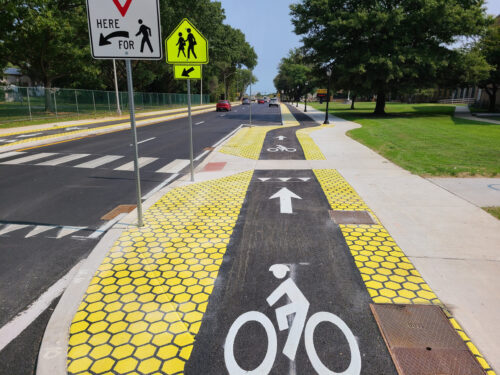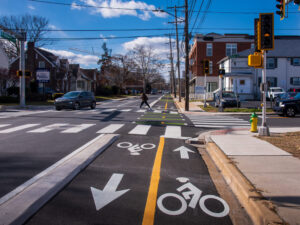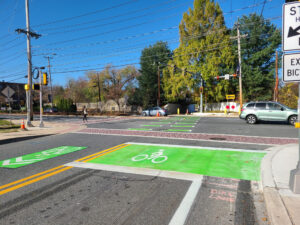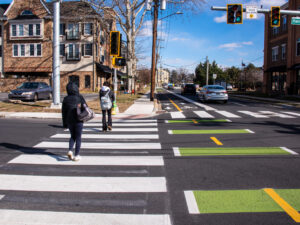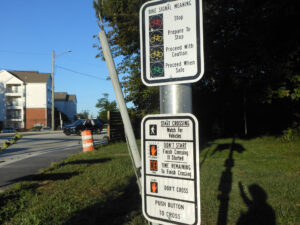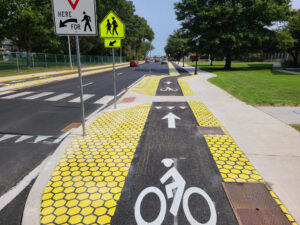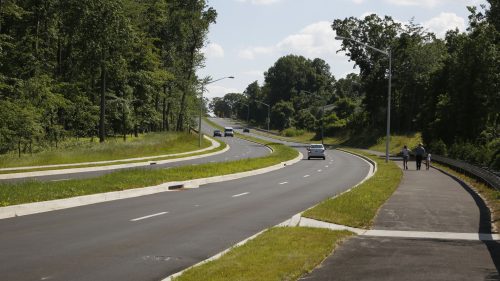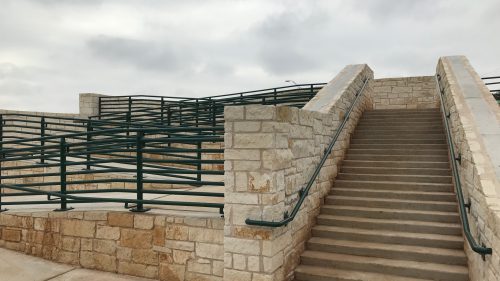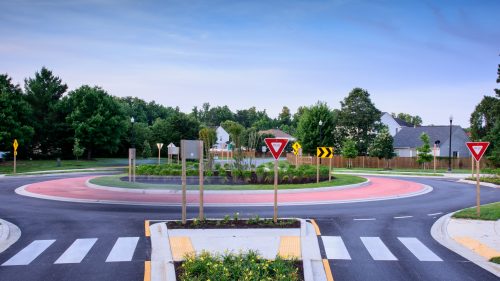Delaware Avenue Separated Bikeway
Delaware Avenue Separated Bikeway
At the beginning of this project, Delaware Avenue in Newark was a one-way street with two travel lanes and a striped eastbound bike lane. There was no facility for westbound bicycle traffic, and cyclists typically occupied the sidewalk. This was quite problematic as this street runs directly through the center of the University of Delaware campus with high volumes of bicycles, pedestrians, skateboards, long boarders, scooter riders, and vehicles all traveling the street as part of their daily commutes. JMT began this project with a feasibility study to consider whether a two-way bicycle facility was possible along 1.2 miles of busy urban street. The study quickly evolved into a complex major capital project with interest from stakeholders around the state. By the end of the project JMT had delivered a new street that is truly one of a kind and demonstrates innovative complete streets design and an exceptional example of separated bicycle facility design.
JMT led this project from its initial conception in the planning stage through preliminary and final engineering, and throughout construction.
JMT staff worked with the Delaware Department of Transportation (DelDOT), the City of Newark, Bike Delaware, and multiple other stakeholders to revise state laws to allow for the use of these innovative bicycle signals, plan and implement a temporary installation project to test the bicycle facility within the extremely narrow right-of-way, gain approval to implement experimental bicycle signals following the MUTCD experimental process, and work through many complex design issues and options.
Extensive public outreach included collaboration with the City of Newark, the University of Delaware, fire company, high school, and DART, the region’s bus transit agency. The JMT team even collaborated with Dutch cycling experts on the design of a low mountable, bike-friendly curb to separate cyclists and vehicular traffic along the raised bike lane portion of the project.
The complete streets design included a raised tabletop intersection and pedestrian scramble phase at South College Avenue, a floating bus island, unique bicycle facility transitions at either end of the facility as well, as a trail crossing at the mid-way point of the facility.
This project set the example for future streetscape projects within the state, showcasing what a true complete street can be.
